There are various reasons why online shoppers decide to abandon their shopping carts. Whether it’s because it’s too difficult to enter their information or the page takes too long to load, it comes at a great cost to eCommerce businesses. As a matter of fact, according to research by Sucharita Kodali, a principal analyst at Forrester, in the past five years, the shopping cart abandonment rate has stayed the same.
So, what can your eCommerce business do to improve shopping cart conversion? Figuring out why your potential customers are choosing to abandon their carts can take some research and time, but one thing that you can do in the meantime is to start sending abandoned cart emails. According to Klaviyo’s eCommerce Industry Benchmark Report, their users have generated over $60 million in sales directly via their abandonment cart emails.
Cart Abandonment Email Examples:
What Is an Abandoned Cart Email?
Abandoned cart emails are emails that are sent to customers who added items to their cart, but then failed to complete the checkout process. It’s used by businesses to convert prospects into paying customers. Usually you will include a catchy subject line, introduction, list of the items that are waiting in the cart, and a call-to-action prompt. If you want to, you can also include a discount or offer as an extra incentive or simply social proof, like a product review, for extra encouragement.
9 Tips for Optimizing Abandoned Cart Emails [With Examples]
1. Write a well-thought-out subject line
Just like with email newsletter subject lines, the subject line of your abandoned cart email deserves as much thought as the body of your email (if not more). Effective subject lines have three elements: your brand name, what’s left behind, and what you have to offer. While you do not necessarily have to include a discount, you can still create a sense of urgency by mentioning that their cart will expire soon or the stock is low.
Don’t feel obliged to keep it formal. Unusual subject lines can help your cart abandonment email to stand out.
Here are a few examples of quirky subject lines that you can adapt for your cart abandonment email:
- Groupon: “Deals That Make Us Proud (Unlike Our Nephew, Steve)”
- Warby Parker: “Pairs nicely with spreadsheets”
- TicTail: “Boom shakalak! Let’s get started.”
- Origins: “Find Out Why This Fave Is Sold Every 10 Secs…”
- Brandless: “Your absolute faves?”
- Guess: “Don’t wear last year’s styles.”
- Fabletics: “Your Butt Will Look Great in These Workout Pants”
- Active Trail: “Say goodbye to old fashion style”
- Topshop: “Meet your new jeans”
- Adestra: “Thanks for Joining – Here’s What’s on Sale”
- Too Faced: “All You Have To Do Is Get What You Want”
- Care/of: “Let’s make a plan”
- Shinesty: “You left your stuff at our place”
- Vinomofo: “The 2nd rule of Vinomofo: never leave a wine behind”
- Fab: “There must have been a mistake, you left this behind”
- Bath & Body Works: “Trust your instincts”
- Proven: “Your Place in Line is Going, Going…”
- AYR: “Just lookin out for you ?”
- Tuft & Needle: “You Should Sleep on Big Decisions”
- Sock Fancy: “Still thinking it over? Maybe this will help…”
2. Make the layout attractive
Emails are much more than just the text. Most email software offer a decent selection of email templates that you can adapt to fit your branding. After all, you have taken the time to write a compelling subject line and all of that effort will be a waste if the actual email is void of relevant visuals.
Once again, you don’t have to keep it conventional by just including pictures of the items that were left behind. Depending on your branding, you can include something less conventional like Headspace, Framebridge, and Molekule have done below.
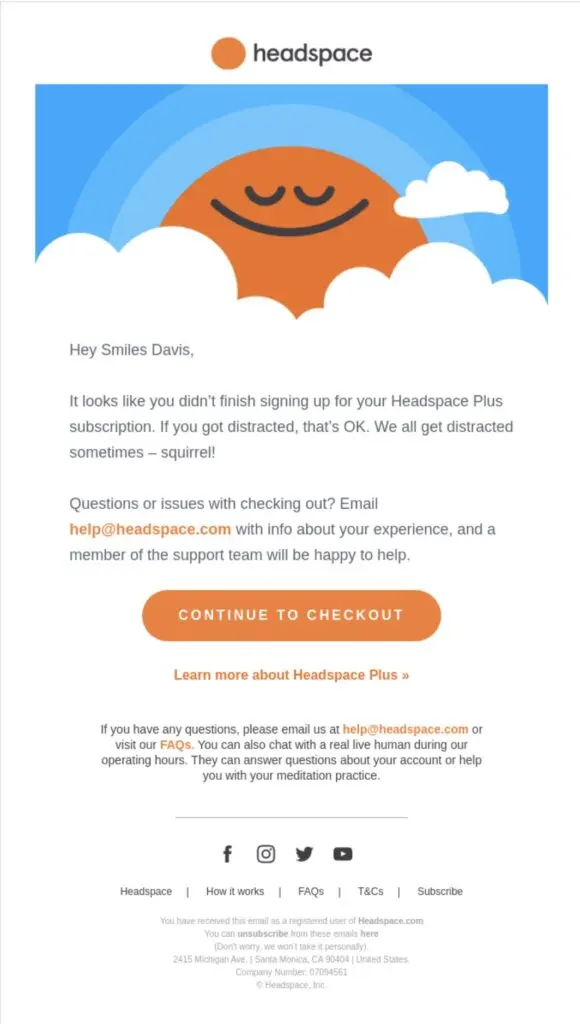
Source: reallygoodemails.com
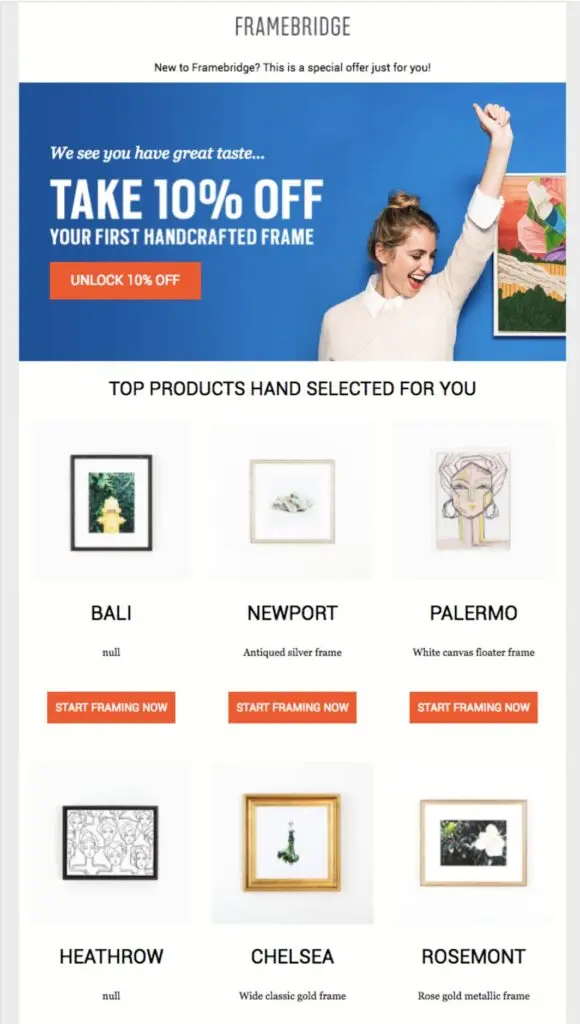
Source: reallygoodemails.com
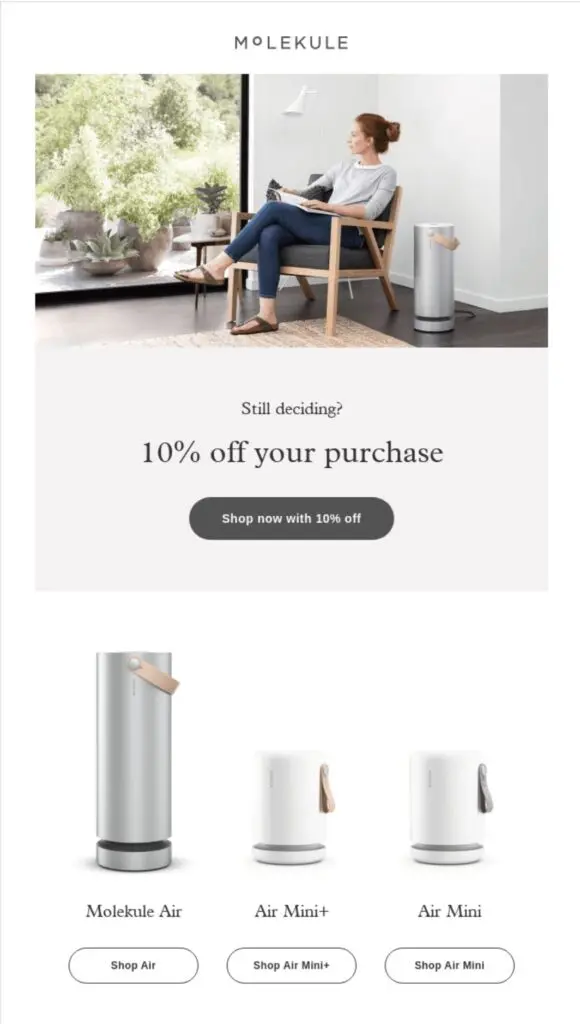
Source: reallygoodemails.com
3. Include the items left behind
If you have not included this in your subject line, you should definitely list the products that are still waiting in the customer’s cart in the body of your email message. In fact, even if you mentioned it in your subject line, you should mention it again in the body as you need to include other information like the quantity, product images, and pricing.
However, if the customer has added multiple items to their checkout, you might want to focus on just one of the items, like the best-selling item or product with the most reviews. When following this approach, it’s a good idea to focus on a few of the main features and also add a few customer reviews.

Source: dyson.com
Whether you choose to include all the items or highlight the features of just one, always be sure to include a link so that they can go straight to their cart. To ensure that this call-to-action button is clear, you can, for instance, use contrasting color like the cart abandoned email example of Dyson above.
4. Make it personal
Mentioning the specific products that are still waiting to be checked out is a first step to making it personal, but there are other elements that you can also add. As mentioned earlier, if you have the name of the customer, it’s a good idea to include it in the subject heading. You can then include it again in the body of the email.

Source: moschino.com
Moschino, for example, includes other products that the customer might like based on the items waiting in the cart. Not only does it increase personalization, but it is also a good opportunity for cross-selling or upselling.
5. Offer an incentive
From free shipping to discounts, there are various types of incentives that you can offer customers. In fact, according to shopping cart abandonment statistics by the Baymard Institute, about half of consumers list price as the main reason why they abandon their carts.
Though, this approach does not come without risk. If you always include a discount in your cart abandonment emails, customers can catch on to your strategy. As a result, they might delay finalizing the checkout on purpose because they know that it pays to wait.
If you do want to go with this approach, here are two tips. The incentive should be attractive enough. While it doesn’t have to be 50% off, your potential customers will need something more substantial than a mere 5% discount. Secondly, you should include a cut-off time. By including an expiration date, you create a sense of urgency so that they convert practically immediately.
This cart abandonment email from Grammarly is a good example of how you can include an incentive. They have ticked both these boxes: a generous discount that is only valid for 24 hours.
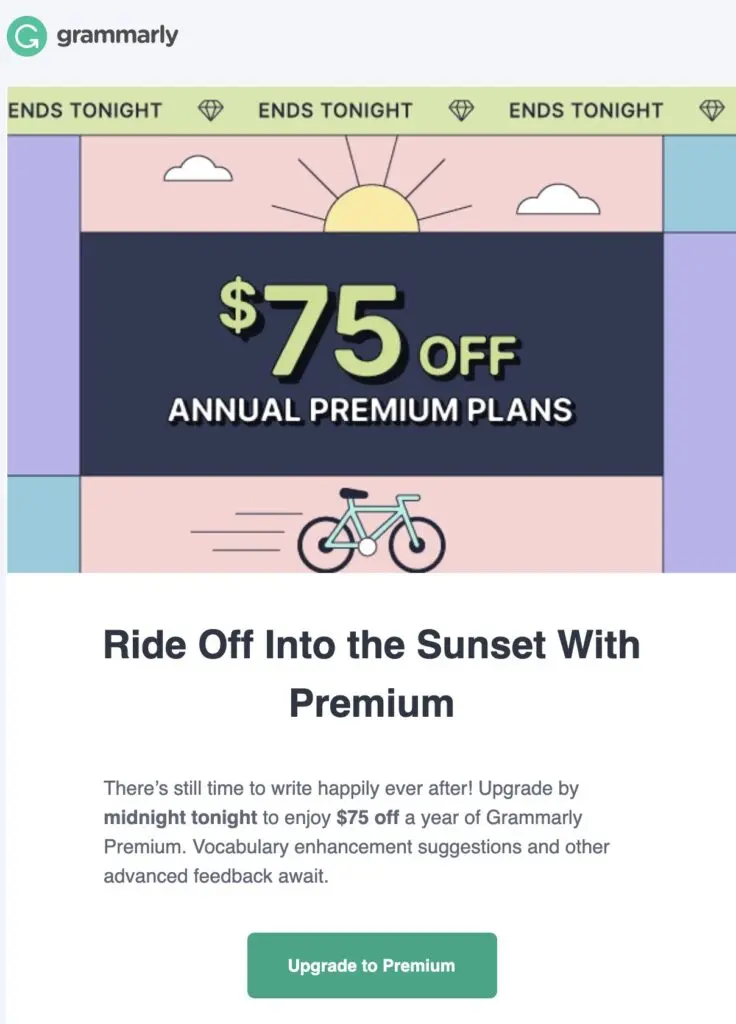
Source: grammarly.com
6. Include reviews
By including social proof like a customer testimonial (like the email below of Casper) or a product review, you can create a sense of urgency. This way, your customers will feel that if they do not complete the purchase they will, ultimately, be missing out. Not only that, it also helps to communicate to your potential customers that your business is trustworthy and that your products offer value.
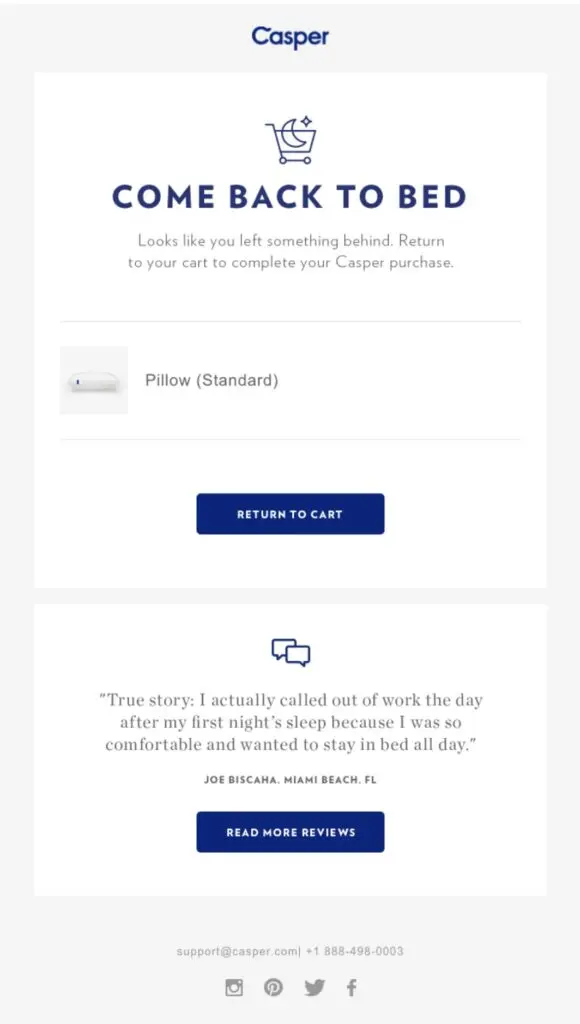
Source: reallygoodemails.com
An alternative approach is to include press mentions in your email instead of reviews. Essentially, this can serve the same purpose in that it shows to your potential customers that your products have caught the attention of trustworthy publications. Brooklinen followed this approach by including the section “As Featured In” in the footer of the email.
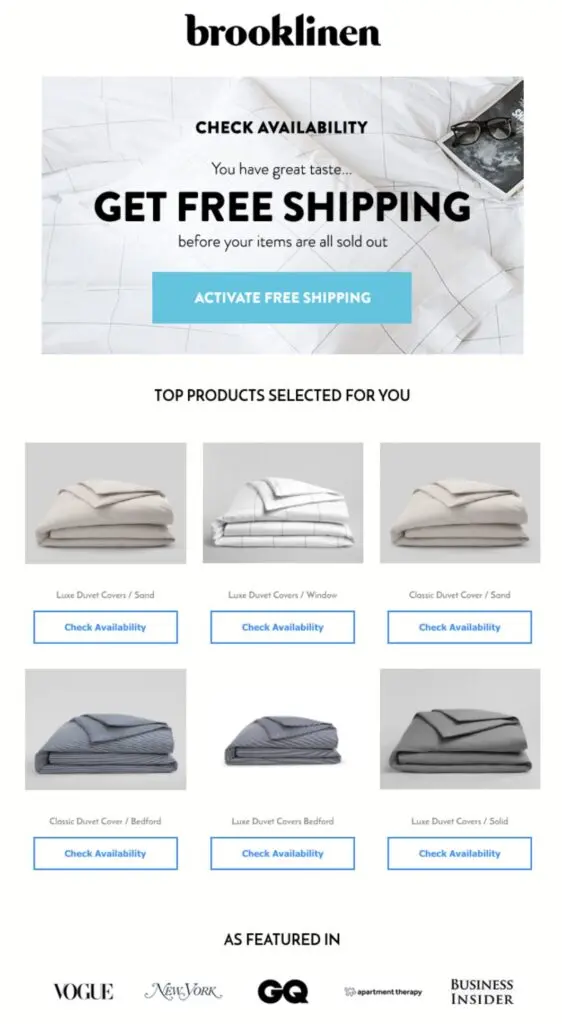
Source: reallygoodemails.com
7. Make your copy compelling
While incentives and social proof can help to persuade customers to proceed to checkout, it’s not a replacement for compelling copy.
Your email preview text (the short message that email clients like Gmail often display below the subject line) is real estate. So, be sure to personalize it by including the customer’s name and optimize it by being creative.
Then, instead of simply listing the items left behind, you can use the body to dispel any fears that they might have about buying the specific problem. Adidas, for example, uses clever copy to inform customers about the option to customize their product. If it were not for this message, their customers might have been unaware of this feature.

Source: reallygoodemails.com
8. Optimize your CTA
When writing shopping cart abandonment emails, calls to action that require a low commitment actually work better. So, instead of using “Buy Now”, rather use “Return to Cart”, “Resume Shopping”, “See Your Items”, or “View Cart Again”. The goal of your call to action should be to lead your potential customers through the sales funnel and considering that they abandoned their cart, they might not quite be ready to go into an action that requires a financial commitment.
While the CTA (“FINISH THE JOB”) of Bonobos in the email below is more direct, it’s a great alternative to “Buy Now”.

Source: reallygoodemails.com
9. Turn it into an email drip campaign
While you can send just one email as a reminder, for better results you can create an email drip campaign. According to data gathered by Klaviyo, sending two to three emails in an abandoned cart flow is typically best as the brands that follow this approach make the most amount of revenue. Moreover, their open rates and click-through rates also remain very strong.
If you opt for the latter approach, you will create about three emails. The first email should be sent within 24 hours after the cart has been abandoned and will serve as a basic reminder. It’s even better if you can send it within a few hours.
Then, a couple of days later you can send a follow-up email. Once again, this email should not be too salesy.
Your third, and final, abandoned cart email should be sent a few days after your second email. Though, some suggest that you can even wait till two weeks before sending it. In this last email, you can include your offer or discount code.
Wrapping Things Up
Abandoned cart emails are for sure an excellent strategy, but it should not be your only recourse. It’s also crucial that you find out if there is not a specific reason why visitors fail to convert to paying customers. Are your items priced competitively? Can your shipping costs be lower, if not free? Is your checkout process too long and complicated?



